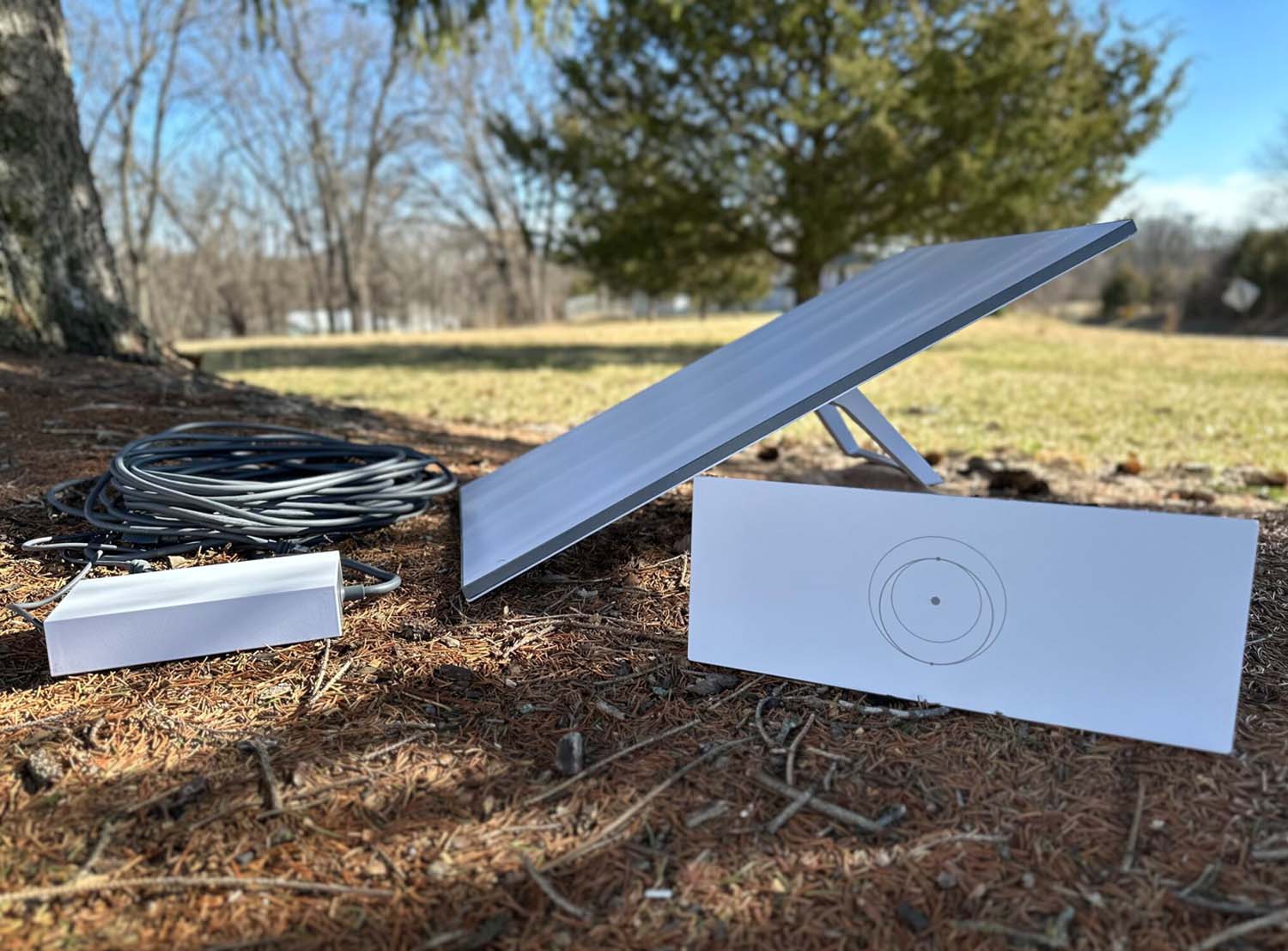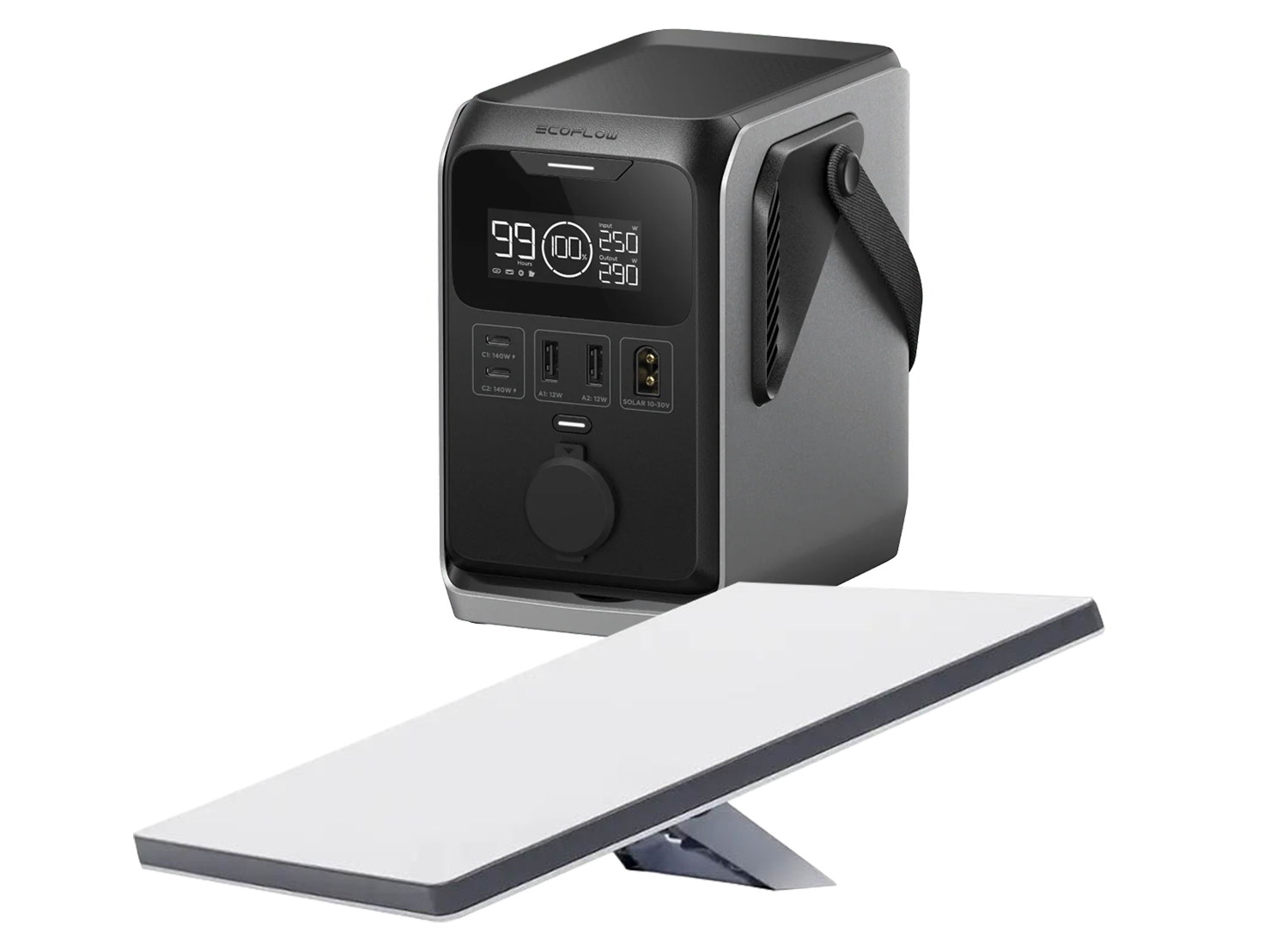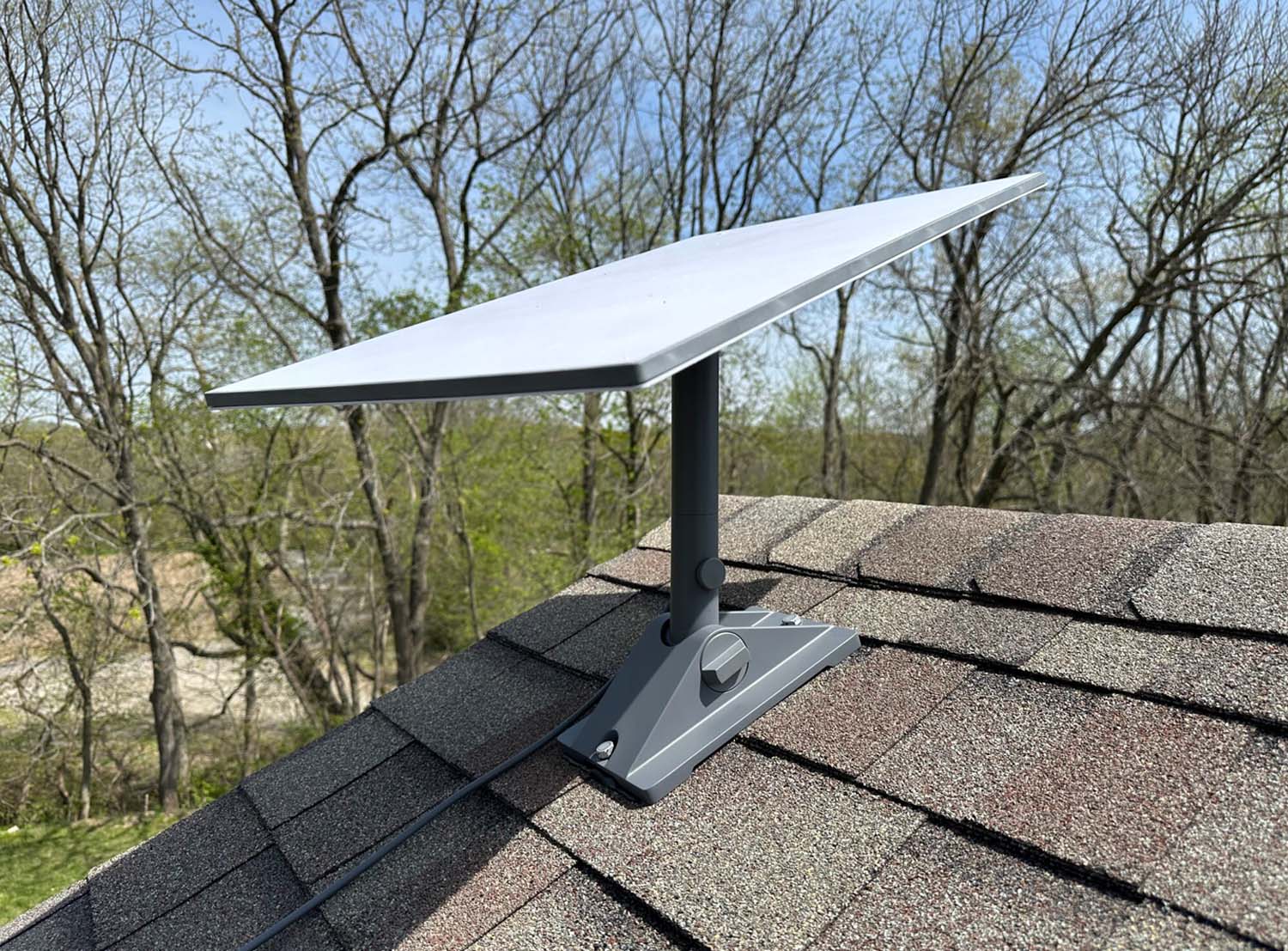Which is the better Starlink hardware option, the Mini or Standard?

This post will break down the major differences and compare use cases for each.
These days you have several different Starlink models to choose from, like the Mini and the Standard. But how do you know which dish is right for you? I’ve used the Mini and the Standard extensively, both at home and for camping and created this guide to help you choose the right Starlink dish for your situation.
Starlink Mini
The Mini dish is Starlink’s latest innovation. Like the name implies, it’s a much smaller version of the Standard dish. The small form factor makes it ideal for travel and camping. It’s about the size of a laptop and weighs just a few pounds. The Starlink Mini is less than half the size and weight of the Standard.

Besides the compact size, the Mini has two unique features. First, the Wifi 5 router is integrated into the dish. Unlike other Starlink models, there is no separate Wifi router or power supply. The other thing that sets the Mini apart from other Starlink dishes is its ability to run directly from DC power. You can power the Mini right from a USB-C port or a portable battery bank.
Starlink Standard
The Standard is Starlink’s third generation hardware. It’s a major departure from previous models due to the elimination of the actuators and mast. Older Starlink’s had motors which would automatically align the dish to the optimal direction. In the early days of Starlink’s satellite constellation, this was necessary for the best performance. By the time the Standard came out, Starlink had enough satellites, and the motors were no longer necessary.

The Standard and Mini are part of the same V4 hardware generation. They look very similar in terms of the design, with the Mini being a miniature version of the Standard. But it goes beyond just the form factor. The Standard has a separate Wifi router and power supply. The dish is mounted outdoors, while a cable is routed inside where the router and power supply are installed.
Key Differences
Now that you have a basic overview of each dish, let’s get into the key differences between the Mini and Standard.
Price (Sept 2025)
Mini: $295
Standard: $550
The Starlink Mini has a clear advantage when it comes to cost. The question you have to answer is whether or not the small form factor is worth the extra money. For me personally, I was excited about the Mini for camping and travel purposes. It’s so much easier to transport and set up due to the smaller form factor, and that helps justify the cost for some use cases.
Size and Weight
Mini: 11.75″ x 10.2″ x 1.45″ (298.5 x 259 x 38.5 mm)
Standard: 23.4″ x 15.07″ x 1.5″ (594 x 383 x 39.7 mm)
No surprise here. The Mini (~3 lb.) is much smaller and lighter than the Standard (~7 lb.). It’s an ultra-portable hardware kit that can fit in a backpack. The Standard dish, although smaller and lighter compared to previous generations, just can’t compete in terms of size and weight. The Mini’s integrated Wifi router makes it more simple and compact compared to the Standard’s external router and power supply.

Power Consumption
Mini: 20-40 watts
Standard: 75-100 watts
The Mini uses less power compared to the Standard. In my Starlink Mini Review, the Mini used in the range of 20-30 watts most of the time. I measured the power consumption of the Standard as well, and found that it typically uses between 40-60 watts.
I like that the Mini has multiple power input options compared to the Standard. With the Standard dish, you have to use the AC power brick. When I took it camping, I would have to use an inverter to get AC power from the battery system in my travel trailer. The Mini, on the other hand, can be powered from AC or DC. The kit includes an AC wall adapter if you have an outlet or an inverter. But you can also purchase adapter cables for the Mini to power it from a USB-C port or 12V car outlet.
Since the Mini uses half the power and has a wider variety of power input options, it has a clear advantage when it comes to off-grid scenarios. For example, I was able to build a self-contained Starlink Emergency Backup Kit using a small power bank, USB-C cable, and the Starlink Mini.

Performance
Internet speed and signal reliability is where the Standard dish really starts to show its strengths. Starlink doesn’t publish any specific speed ratings for either model, mostly because it varies so much based on service plan, location, time of day, etc. But I’ve done a lot of testing with both units under similar conditions.
Mini: My best speed test with the Mini resulted in 191 Mbps down and 15 Mbps up. Latency typically comes in under 50 ms.
Standard: In my testing with the Starlink Standard, I’ve been able to achieve download speeds over 300 Mbps, with upload speeds in excess of 30 Mbps. Latency is usually under 40 ms. The Standard is about twice as fast as the Mini in my own testing.
I think the difference in performance comes boils down to the following factors:
- The Standard dish has a more powerful antenna. It has a larger surface area, and a more powerful power supply.
- The Mini is less consistent and less reliable in bad weather. The weaker power supply rating of the Mini doesn’t allow it to push the signal past rain, snow, or ice as easily as the Standard can with its beefy power supply.
- The Standard has a much better Wifi router, which means better Wifi speeds and range. It’s Wifi 6 compared to the Mini’s Wifi 5 router. In my Starlink Gen 3 Router Review, I found that the Standard router was 4 times faster than the previous generation router at a distance of 50 feet. In a similar test, the Mini’s Wifi speeds dropped off dramatically at 50 feet.
Service Plan Options
Mini: The Mini is designed for travel, and the service plan options reflect that. You can use the Mini with any of the mobile plans, like Starlink Roam. The Mini can be used in-motion with any of the available plans.
Standard: The Standard is mainly intended for the fixed location service plans, like Residential and Business. But Starlink allows you to subscribe to any service plan with the Standard, including Roam. The Standard dish supports in-motion use with a compatible service plan.
Accessories
Starlink offers several accessories for both the Mini and Standard. There are roof mounts for both models, allowing you to permanently attach the dish to your home. Starlink also sells vehicle mounts for the Standard and Mini.

Longer cables are offered for both dishes, enabling longer distances between your power source and where the dish is placed. Also available are additional mesh Wifi routers, so you can improve the Wifi coverage for either system.
Since the Mini can be powered directly from DC, it has the edge in terms of power accessories. There are plenty of adapter cables that you can use to power the Mini from USB-C, a vehicle 12V outlet, an RV battery system, and more. These types of DC power adapters are not available for the Standard dish without additional modifications to the system.
How to Choose
Based on all the factors I’ve covered so far, I would say the Mini is better for travel use cases, like for camping, vans, and RV’s. It has a more compact design and lower power consumption. You can power the Mini in a variety of ways, like from an inverter, USB-C port, or a 12V car outlet.
The Standard is better for home internet with the Residential service plan. But the Standard is also a good option for full-time travelers who rely on their internet connection. The larger antenna and beefy power supply makes it more consistent in bad weather. It’s capable of higher download and upload speeds. The Wifi router covers a lot more area and delivers better speeds.
You should get the Mini if:
- You need a small, light, compact dish for traveling.
- You don’t need a large Wifi coverage area.
- You want basic internet access for recreational purposes.
- Reliability and performance aren’t your top priorities.
You should choose the Standard if:
- You need fixed home internet or high-demand portable internet.
- You don’t mind having a larger dish that uses more power.
- You want the best speeds and reliability.
- You have a larger area to cover with Wifi.
Summary
Both the Starlink Mini and the Starlink Standard are great hardware options for a variety of use cases. The one big limitation for home internet with the Mini is that it’s not available on the Residential service plan, making the Standard the go-to option for installation on homes. On the other hand, digital nomads, campers, and other travelers will appreciate the Mini’s smaller form factor and more flexible power input options.
After using both for camping, I think the Mini is the better travel option, thanks to the ultra-portable design and low power consumption. It’s not a good option for fixed home internet due to the service plan limitations and weaker Wifi router. I’ve been using the Standard for home internet, and that’s where it really shines. The larger antenna with more power handles weather easily. And the router covers my entire house without any dropouts.
Video
Half the Size, Half the Speed? Starlink Mini vs Standard Performance. Which is right for you?
Source: Mini or Standard


